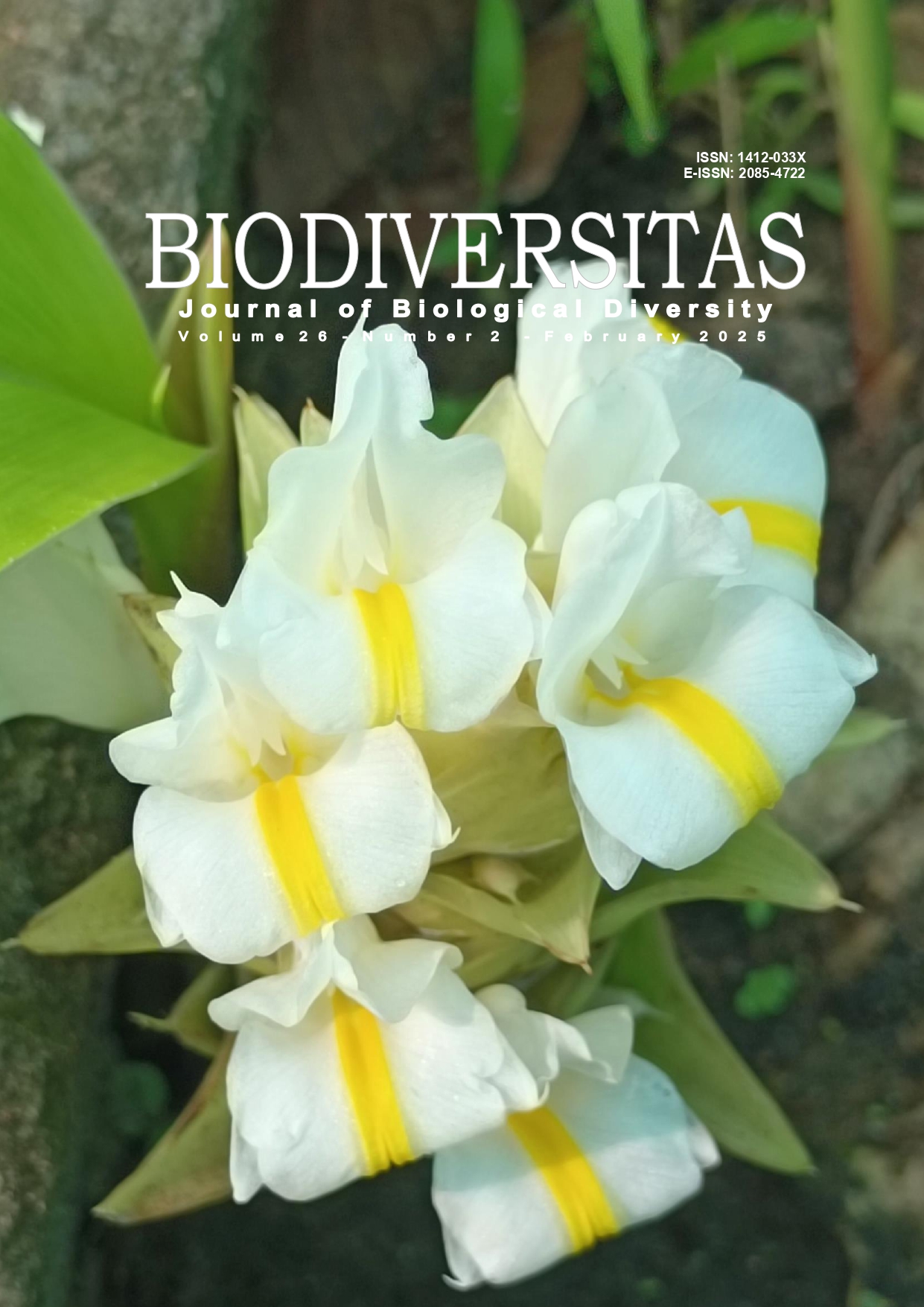Effects of different media and solvents on biological activities and secondary metabolites profiles of a coral-derived Streptomyces sp. RC4
##plugins.themes.bootstrap3.article.main##
Abstract
Abstract. Rizky, Nofiani R, Rudiyansyah, Putri CD, Setiawan A, Wibowo DS, Setiyoningrum F. 2025. Effects of different media and solvents on biological activities and secondary metabolites profiles of a coral-derived Streptomyces sp. RC4. Biodiversitas 26: 739-747. Streptomyces sp. RC4 demonstrates a potential source of secondary metabolites with various biological activities. Culture media and solvents for culture media influence the production of the metabolites. This study investigated the effect of different culture media and solvents on the biological activities and secondary metabolite profiles of Streptomyces sp. RC4. Seven different media, i.e., International Streptomyces Project (ISP) 1, ISP2, ISP4, A1, Starch Casein Broth (SCB), Potato Dextrose Broth (PDB), and PC-1, were used as growth media. Three different solvents, i.e., distilled water, 2.5% NaCl solution, and artificial seawater (ASW), were used to prepare each medium. The cultures were then shaken at 200 rpm for seven days, after which secondary metabolites were extracted with ethyl acetate. Each extract was tested for antibacterial activity and cytotoxicity using brine shrimp lethality assays (BSLT). The result showed that 11 of 21 extracts exhibited antimicrobial activity with varying levels of effectiveness. ISP2 extract (ISP2 dissolved in distilled water) demonstrated the largest inhibition zones, while SCB NaCl extract (SCB dissolved in 2.5% NaCl solution) inhibited the highest number of test microbes. Three extracts (ISP2, PC-1 ASW, and SCB NaCl extracts) were classified as highly toxic based on Clarkson’s toxicity category (LC50 < 100 µg/mL). The most toxic extract was PC-1 ASW extract (PC-1 dissolved in ASW) with an LC50 value of 40 ?g/mL. Metabolomic analysis revealed distinct chemical profiles for each extract, with secondary metabolites such as cyclo (Leu-Pro), cyclo (Pro-Val), p-cymene, o-cymene, and methoxy-phenyl oxime. Several compounds remained unidentified through molecular networking analysis, suggesting they might be novel. These findings indicated the diversity of secondary metabolites and biological activities of Streptomyces sp. RC4 is significantly influenced by medium and solvent compositions.
##plugins.themes.bootstrap3.article.details##
Most read articles by the same author(s)
- RISA NOFIANI, RIZKY, RIDHO BRILIANTORO, PUJI ARDININGSIH, Anti-bacteria and toxicity potential of a rare Actinobacterium Pseudonocardia sp. SM1A, isolated from Mangrove Park, West Kalimantan, Indonesia , Biodiversitas Journal of Biological Diversity: Vol. 23 No. 1 (2022)
- RISA NOFIANI, SARWIYATI, PUJI ARDININGSIH, ADHITIYAWARMAN, Characteristics of Lactic Acid bacteria isolated from traditional fermented fish , Biodiversitas Journal of Biological Diversity: Vol. 23 No. 11 (2022)
- RISA NOFIANI, RITA MU’IN, HAFIZAH, PUJI ARDININGSIH, Bioremoval of Pb2+ by Aspergillus niger D1RA, A heavy metal-resistant fungus isolated from an illegal gold mining site , Biodiversitas Journal of Biological Diversity: Vol. 25 No. 8 (2024)

